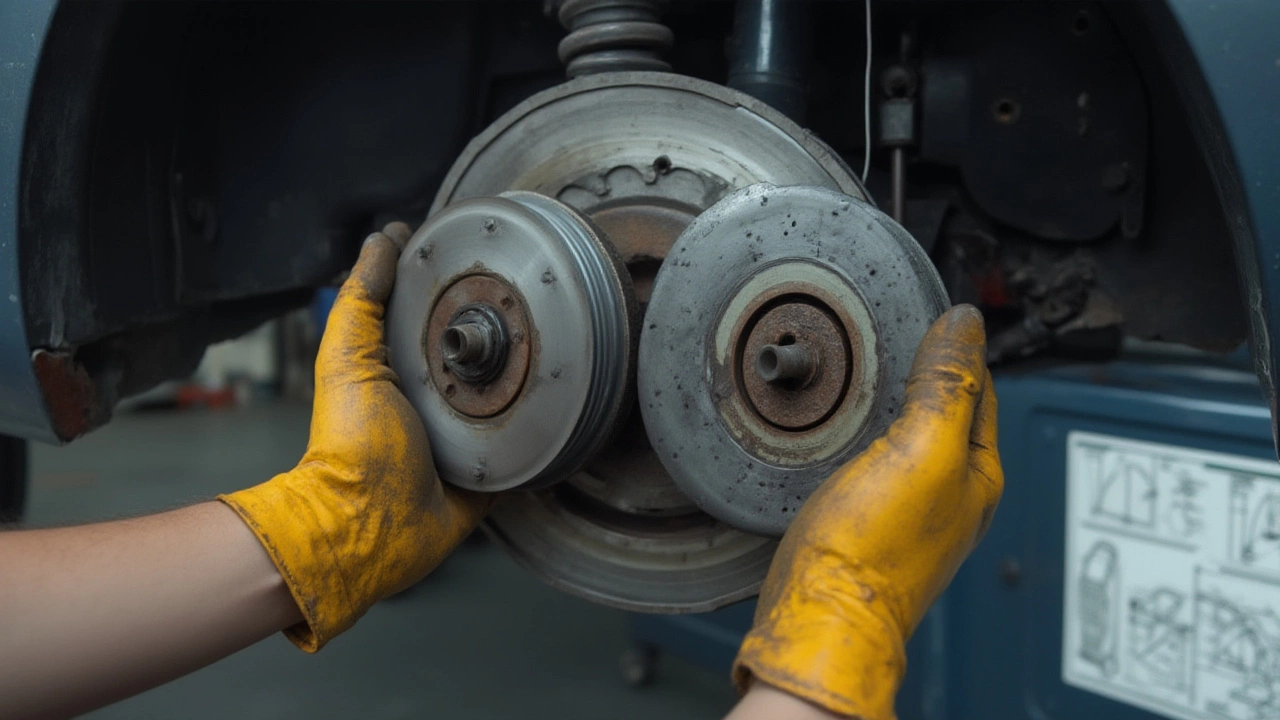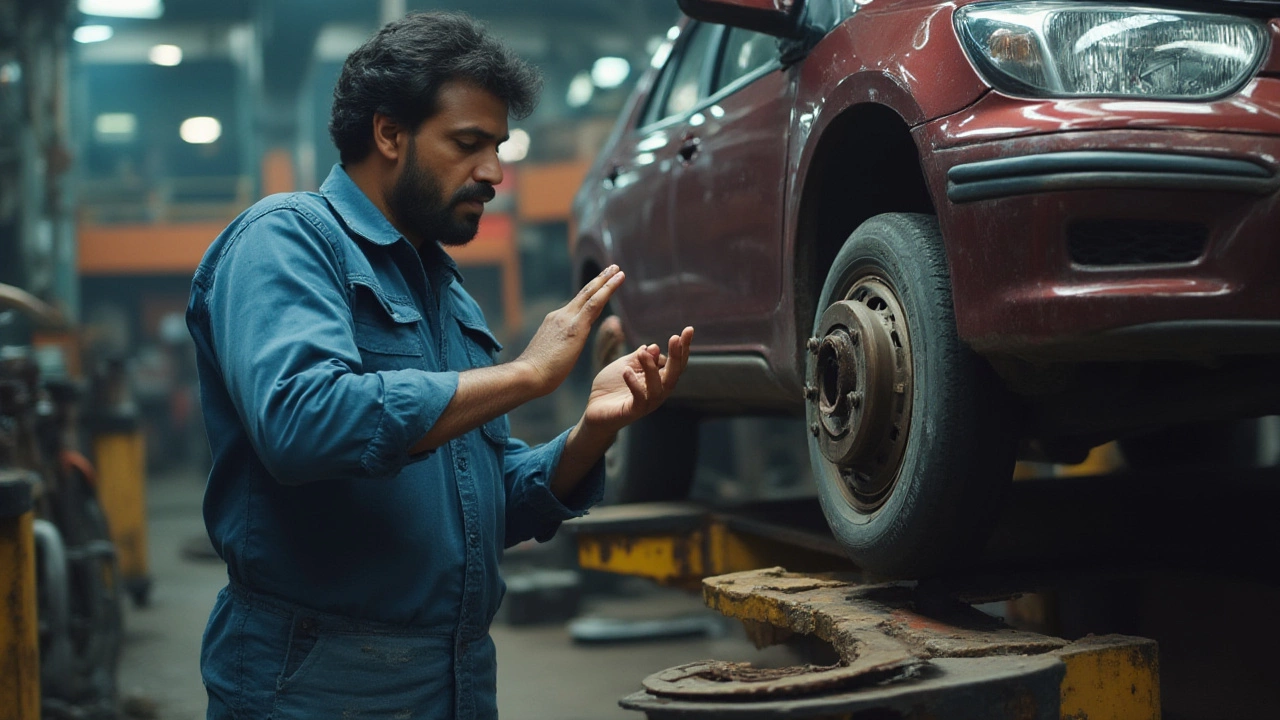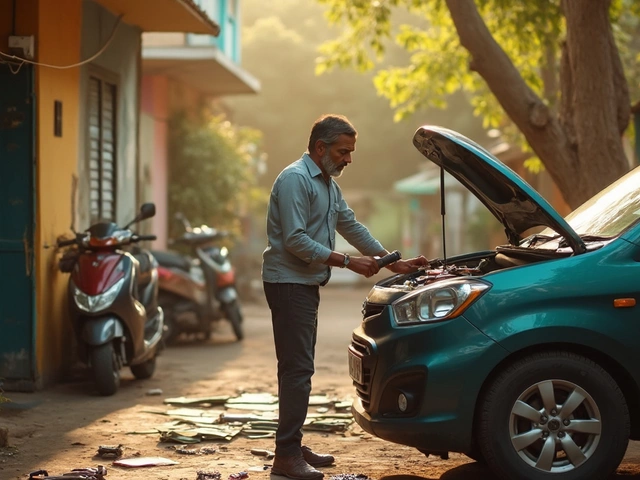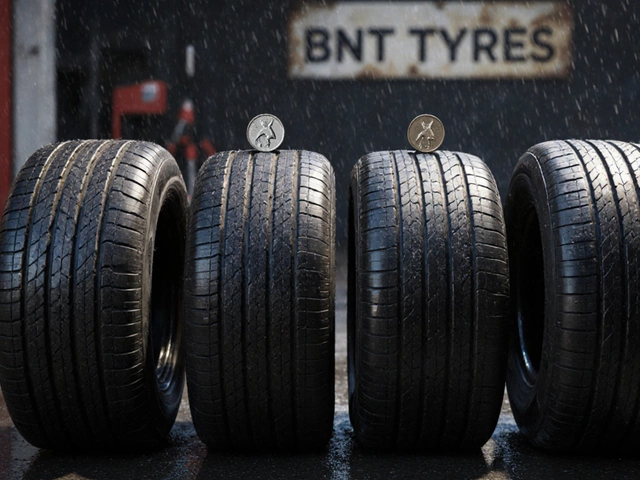Here’s a wild thought: you just swapped your brake pads because that squeal was starting to sound more like a death rattle. Pads in, job “done”—but did you even look at the rotors? You’re not alone if you skipped that step. It feels like a shortcut. But in the world of brakes, easy fixes can come back to bite. Cars haul over 1.5 tons from 60 to zero every day, and you trust a few dozen square inches of metal to pull that off safely. That’s a lot riding on a job that most people barely think about.
Why Rotors Matter More Than Most Drivers Think
Let’s start with some straight talk: brake rotors aren’t just big, shiny discs. Every time you stomp that pedal, your pads clamp onto the rotors, using friction to stop your ride. Over time, though, those rotors take a beating. Heat from braking isn’t kind—it warps, grooves, and hardens the metal. It doesn’t help that pads and rotors literally grind into each other to get you home safe.
Here’s what happens: every time your brakes bite, a tiny bit of pad and rotor material sheds off. Over months and years, rotors wear unevenly. When you pull off old pads, you’ll often see ridges, grooves, or shiny spots. Sometimes, if you run metal-on-metal (yikes!), you’ll even feel deep scores. And don’t forget heat spots: they look blue or purple, and mean the metal’s crystallized in places—think slippery, not grippy.
Turning rotors (sometimes called machining or resurfacing) means shaving a thin layer off the rotors’ face, smoothing out high and low spots. This fresh surface lets your new pads bed in evenly. Some shops put the rotors on a brake lathe to spin and shave them; others might measure runout with a dial indicator to spot warping. The goal? A flat, clean, uniform surface facing your pads every time you slow down.
If you skip this step and swap pads onto grooved or dirty rotors, there’s trouble brewing. Your fancy new pads won’t make perfect contact. It’s like walking in fresh sneakers on a gravel road. You get less stopping power, weird noises, and sometimes a nasty pedal feel. And that’s just the beginning.
The Immediate Effects of Skipping Rotor Turning
Now, some mechanics (and a lot of DIYers) argue that if your rotors look "okay," you can skip resurfacing. If they measure within spec for thickness, show little scoring, and run true—you might be okay. But let’s dig into what you’re risking.
The big one? Brake noise. Those grooves can act like tiny whistle holes, giving you a soundtrack every time you stop. Next up: vibration. Warped or uneven rotors cause your brake pedal to pulse when you step on it. It’s annoying, sure, but also a sign not all parts are working together. More serious is poor braking performance. Pads need a flat surface for maximum friction. If your rotors are uneven, you lose touch points, and with that, stopping power.
There’s also this thing called pad burnishing—new pads can’t bed in correctly against a scored rotor. You’ll see uneven pad wear, and might even see them fall apart prematurely. Some pads leave behind high spots (called "pad impressions") that make everything worse. Oh, and brake fade? You’re more likely to get that if your surfaces aren’t true, since hot spots form and don’t dissipate heat well.
Real-world tip: most rotors have a minimum thickness stamped right on the edge. If you’re close to that, don’t even bother turning just replace. Too-thin rotors heat up faster, crack, and lose strength. Skipping turning isn’t just about smoothness, but also safety.

Hidden Costs and Long-term Consequences
Let’s be honest no one loves spending money on brakes, but what you save today can cost you big tomorrow. When you skip rotor turning, your brake pads wear out faster. Not just a little—some shops have seen new pads ruined in less than 10,000 miles because rotors chewed them up. That means paying for pads twice as often and nobody’s happy about that.
If rotors are grooved or warped, you’re putting extra stress on your entire braking system. Calipers work harder, possibly fail sooner. Wheel bearings get hammered by the uneven load. Before you know it, a $50 shortcut becomes a $500 garage visit.
Let’s not forget the safety angle. Imagine an emergency stop and your pedal pulses, the car grinds, takes longer to haul down from speed. That’s all because the brake system isn’t doing its job. Insurance companies track this stuff. In a 2022 study from the Insurance Institute for Highway Safety, up to 23% of minor rear-end collisions involved cars with subpar brake maintenance—skipped turning or not replacing rotors made a real-world difference in stopping distance.
It’s not just safety or cost. There’s comfort, too. Brake noise and wobble can annoy you every single day for months. If you’re leasing or plan to sell, those sounds kill resale value. More buyers walk away from loud or shaky brakes than from dents or dirty carpets, according to CarMax.
Here's an insider tip: sometimes, new pads paired with bad rotors actually void the pad warranty. Most top brands like Akebono or Wagner clearly say their warranty doesn’t apply unless the rotors were turned or replaced. Worth knowing if you’re banking on a guarantee.
When Is It Okay to Skip Turning Rotors?
It’s not all gloom and doom—sometimes, you really can get away with skipping rotor turning, but you need to know what to look for. Start with the rotor surface: is it smooth, flat, and free of grooving? Some rotors wear evenly and don’t need attention every pad change. Grab a micrometer and check the thickness. Are you well above the stamped minimum? Good sign. Runout (side-to-side wobble) matters, too—less than 0.002” is the gold standard for most vehicles.
There are new styles of rotors, sometimes called “coated” or “high-carbon,” that last much longer without resurfacing, and some manufacturers now say not to turn them at all—just replace if worn. Pads from the dealership for premium cars often match with rotors designed to stay smooth through a full pad cycle, so check your owner’s manual.
But if you answer yes to any of these: deep grooves, shiny heat spots, warping you can feel with your fingers, or a lip at the edge, stop. Don’t skip. Turning is cheap insurance—usually $15–$30 per rotor in most shops. Some rotors are too thin to save; in that case, just replace. After all, your time and safety are worth more than a lunch tab.
Pro tip: after any brake work, follow the break-in procedure from your pad or car brand. It’s usually a series of stops from moderate speed, giving the pad and rotor time to “mate” without overheating. Do it right, and you get quieter brakes and way better stopping power. Skip it, and you’re starting out on the wrong foot, even with perfect parts.
Long story short: your brakes work as a team. Replacing pads without giving rotors proper attention breaks up that partnership. You might roll the dice and win a few months of quiet stops—but you might just find yourself wishing you’d spent the extra half hour with a lathe or new discs. No one ever regrets having brakes that actually, you know, stop.




